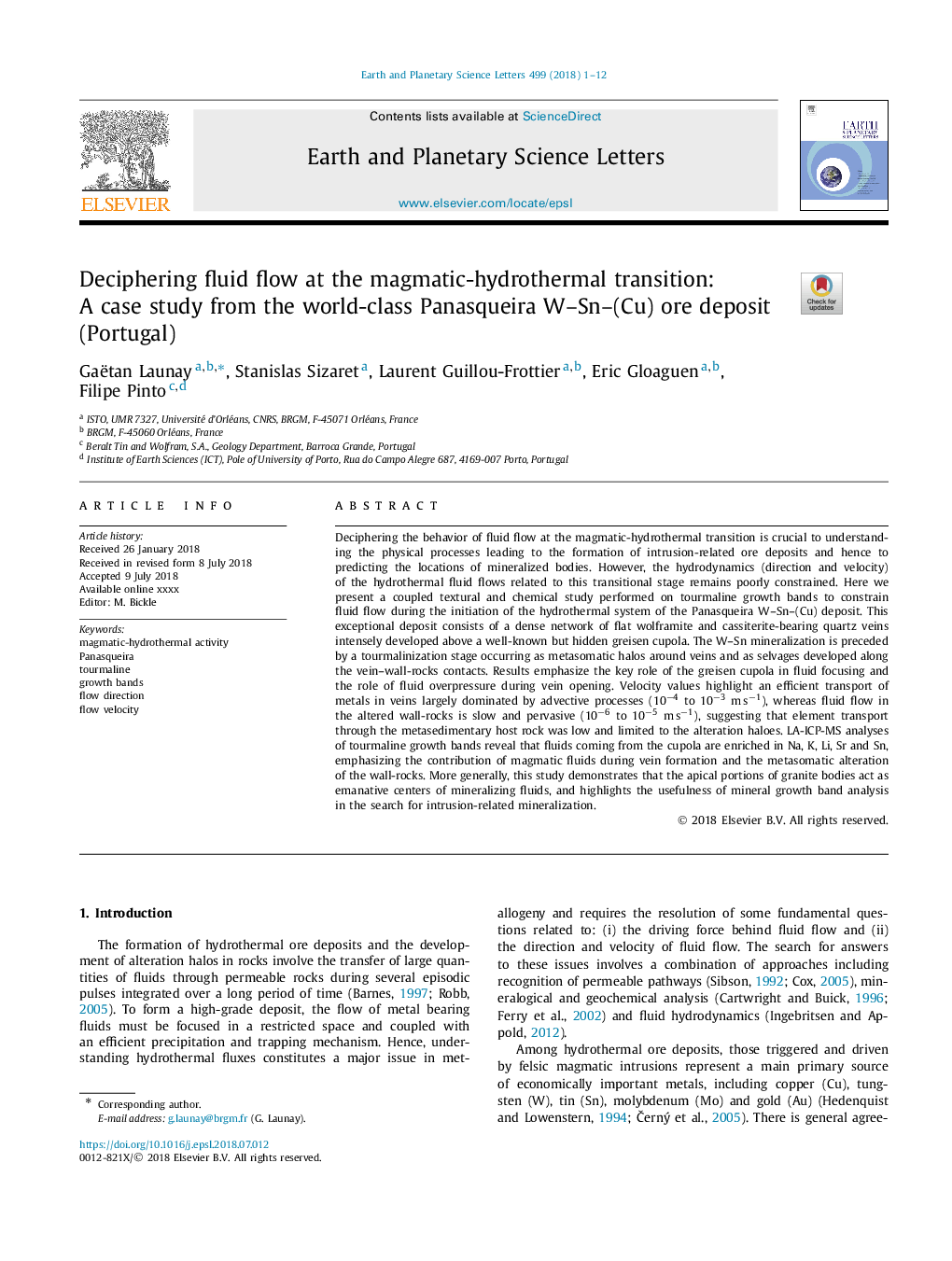| کد مقاله | کد نشریه | سال انتشار | مقاله انگلیسی | نسخه تمام متن |
|---|---|---|---|---|
| 8906672 | 1634657 | 2018 | 12 صفحه PDF | دانلود رایگان |
عنوان انگلیسی مقاله ISI
Deciphering fluid flow at the magmatic-hydrothermal transition: A case study from the world-class Panasqueira W-Sn-(Cu) ore deposit (Portugal)
دانلود مقاله + سفارش ترجمه
دانلود مقاله ISI انگلیسی
رایگان برای ایرانیان
موضوعات مرتبط
مهندسی و علوم پایه
علوم زمین و سیارات
علوم زمین و سیاره ای (عمومی)
پیش نمایش صفحه اول مقاله

چکیده انگلیسی
Deciphering the behavior of fluid flow at the magmatic-hydrothermal transition is crucial to understanding the physical processes leading to the formation of intrusion-related ore deposits and hence to predicting the locations of mineralized bodies. However, the hydrodynamics (direction and velocity) of the hydrothermal fluid flows related to this transitional stage remains poorly constrained. Here we present a coupled textural and chemical study performed on tourmaline growth bands to constrain fluid flow during the initiation of the hydrothermal system of the Panasqueira W-Sn-(Cu) deposit. This exceptional deposit consists of a dense network of flat wolframite and cassiterite-bearing quartz veins intensely developed above a well-known but hidden greisen cupola. The W-Sn mineralization is preceded by a tourmalinization stage occurring as metasomatic halos around veins and as selvages developed along the vein-wall-rocks contacts. Results emphasize the key role of the greisen cupola in fluid focusing and the role of fluid overpressure during vein opening. Velocity values highlight an efficient transport of metals in veins largely dominated by advective processes (10â4 to 10â3 mâsâ1), whereas fluid flow in the altered wall-rocks is slow and pervasive (10â6 to 10â5 mâsâ1), suggesting that element transport through the metasedimentary host rock was low and limited to the alteration haloes. LA-ICP-MS analyses of tourmaline growth bands reveal that fluids coming from the cupola are enriched in Na, K, Li, Sr and Sn, emphasizing the contribution of magmatic fluids during vein formation and the metasomatic alteration of the wall-rocks. More generally, this study demonstrates that the apical portions of granite bodies act as emanative centers of mineralizing fluids, and highlights the usefulness of mineral growth band analysis in the search for intrusion-related mineralization.
ناشر
Database: Elsevier - ScienceDirect (ساینس دایرکت)
Journal: Earth and Planetary Science Letters - Volume 499, 1 October 2018, Pages 1-12
Journal: Earth and Planetary Science Letters - Volume 499, 1 October 2018, Pages 1-12
نویسندگان
Gaëtan Launay, Stanislas Sizaret, Laurent Guillou-Frottier, Eric Gloaguen, Filipe Pinto,